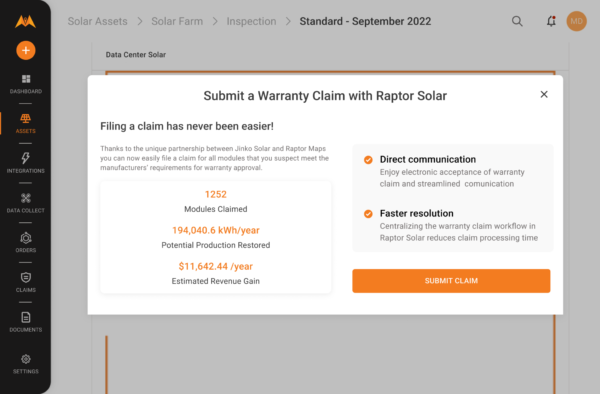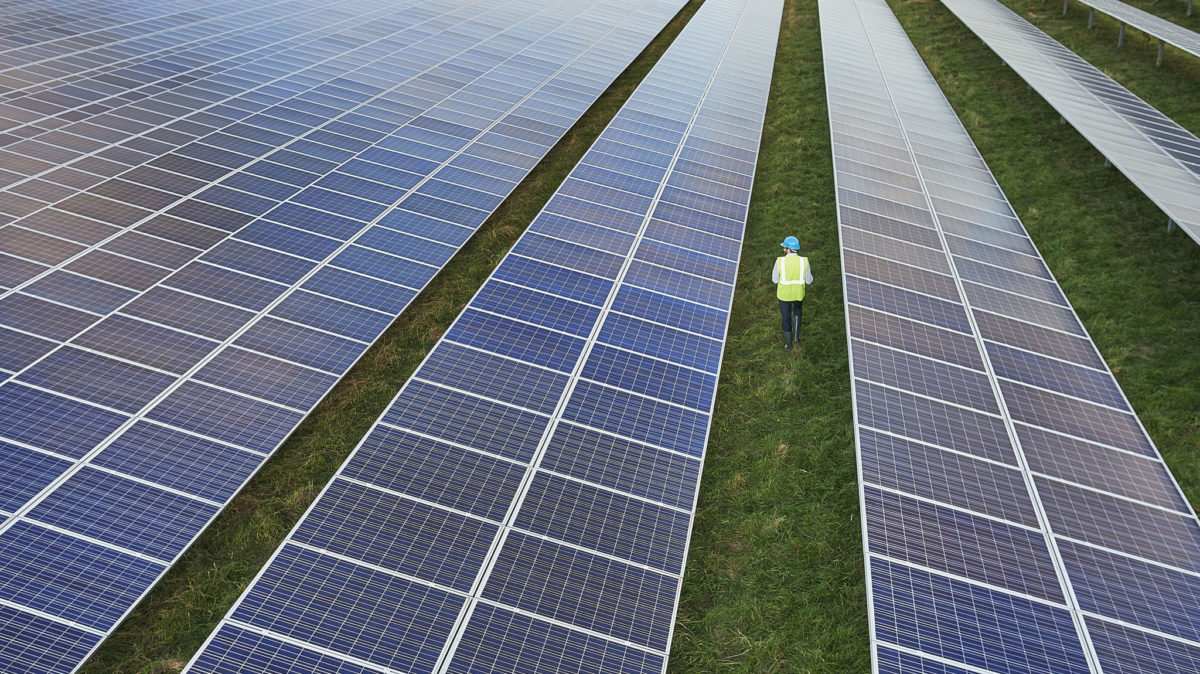With increased pressure on O&M margins, owners and operators are increasingly turning to technology-led solutions to maximize performance, reduce costs, and standardize processes. To meet this need, Raptor Maps, a provider of solar lifecycle management software, has released an enterprise-grade warranty claims product with JinkoSolar, one of the largest module manufacturers in the world.
“It is particularly exciting to have JinkoSolar as a launch partner, as they share our mission of enabling customers to scale solar operations in the long-term,” describes Raptor Maps CEO and co-founder Nikhil Vadhavkar, noting that JinkoSolar modules are accepted by 85 financial institutions. “In addition to providing better tools and guidance for boots-on-the-ground workers, we enable JinkoSolar to track in-field performance of their modules to monitor trends and proactively engage with customers.”
Raptor Maps is a U.S.-based solar software company and its flagship product, Raptor Solar, enables data-driven asset management for commercial and industrial portfolios. The company said its new software provides a solution to a historically complex process by fusing robotically-captured inspection data with both in-field and manufacturer-supplied data. Warranty submissions allow for an auditable data log and enable status updates.

“Our U.S.-based support team takes pride in being the most trusted supplier of solar and energy storage equipment in North America,” explains Nigel Cockroft, general manager of JinkoSolar (U.S.) Inc. “Our commitment to customer success and long-term partnerships has earned us that trust. We are proud to be Raptor Maps’ launch partner, which helps us achieve this mission and provide a top-tier experience for JinkoSolar customers.”
To date Raptor Maps has provided analytics for over 65 GW of solar installations in 40 countries. JinkoSolar has built a vertically integrated solar product value chain, with an integrated annual capacity of 43.0 GW for mono wafers, 42.0 GW for solar cells, and 50.0 GW for solar modules, as of June 30, 2022.
This content is protected by copyright and may not be reused. If you want to cooperate with us and would like to reuse some of our content, please contact: editors@pv-magazine.com.









Keeping track of when solar panels are nearing the end of life and changing them out during low output seasons rather than at a peak productivity time makes sense. Keeping track of very long-term investment that may cover a span of two or three management employment cycles, will make sure the rights things are done at the correct time by the current management team. Every type of power plant goes through lifetime cycles and replacement of equipment so why not manage Solar, Energy Storage and Wind the same way?